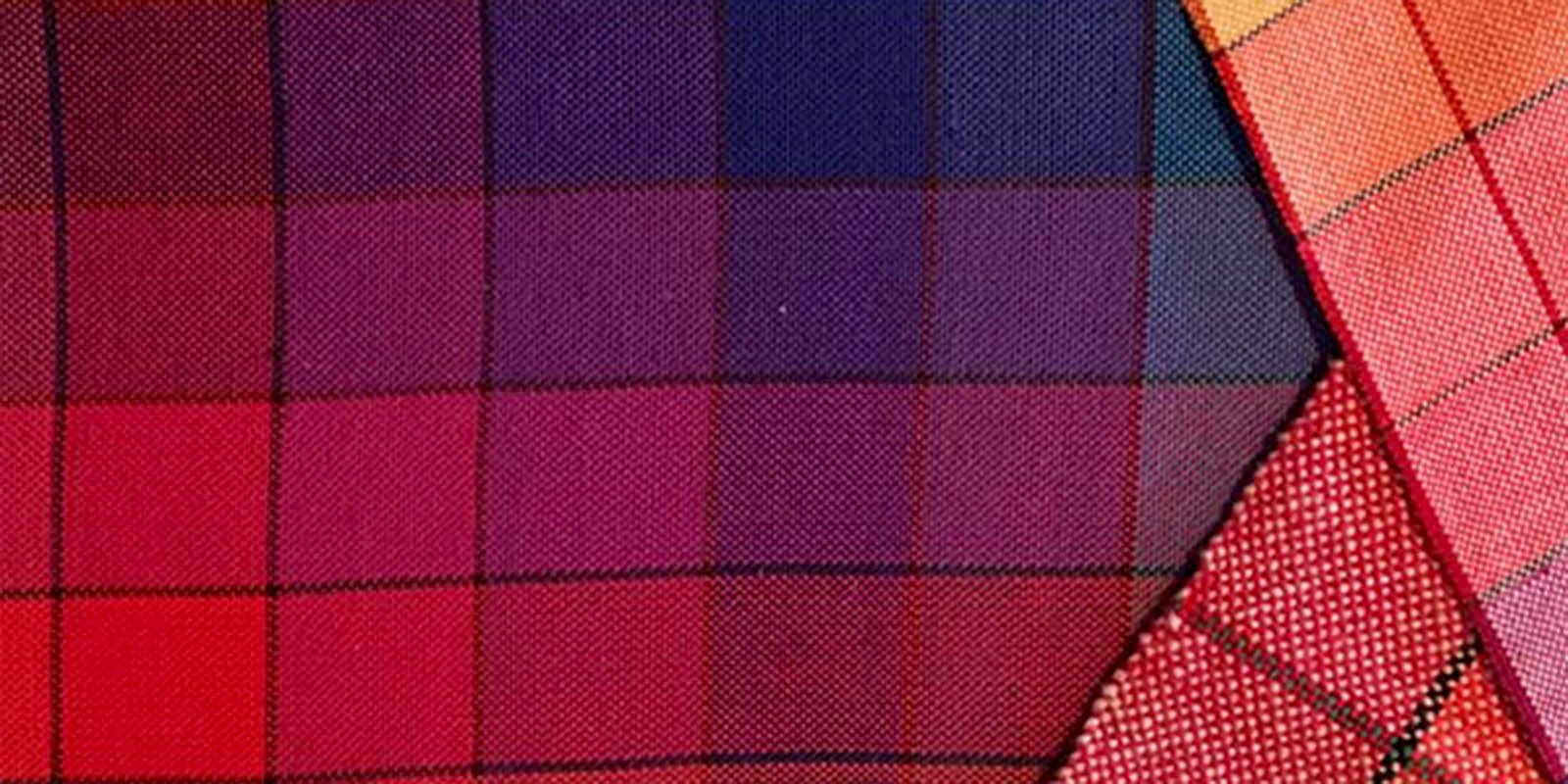Weaver, teacher, and Handwoven contributor and tech editor Robyn Spady joins us today to celebrate the power of the modest yet versatile 4-shaft loom.

this 2-block doubleweave table mat.
In 2009, while teaching a workshop on unusual 4-shafts weaves at the Midwest Weavers Conference in Grinnell, Iowa, I first made the comment that other than a true loom-controlled satin weave, there isn’t any weave structure you can’t weave on four shafts. After uttering this statement, I silently questioned the validity of it and wondered if there was a less-than-obvious weave structure I was overlooking. The next day I mentioned to Madelyn van der Hoogt the statement I had made and asked her whether I had overlooked anything. She pondered the idea for a moment and told me that nothing came to mind.
Now, you may be thinking of all sorts of projects that absolutely must-have-without-a-doubt more than four shafts. This is where it’s important to make the distinction between weave structure and weave pattern. Supplementary warp patterning on four shafts? Absolutely! You can even get two pattern blocks on four shafts with this weave. Double weave? Yep, that too! Twills? No problem. Diversified plain weave? Turned weaves? Velvet? Shadow weave? Tied weaves, like summer and winter and taqueté? Yes, yes, yes, yes, and yes!
To maximize the use of the modest 4-shaft loom, it's important to have a good understanding of blocks. Blocks are a foundation for understanding weave structures, maximizing the number of shafts you have on your loom, reducing the number of shafts a project needs, and exploiting additional shafts when you find yourself the new owner of a loom with eight, sixteen, or more shafts.
Blocks are used to create profile drafts: graphed designs made with blocks. The number of blocks in a design doesn’t necessarily equate to the number of shafts required. For example, to weave four blocks of a loom-controlled satin weave one would need twenty shafts. In contrast, Rosalie Neilson has blown me away with her stunning examples of four blocks of rep weave on four shafts. Overshot and crackle weaves also allow four blocks of pattern on only four shafts. Fabulous!
Blocks were the theme of Handwoven’s November/December 2011 issue; however, if blocks are a mystery to you, I highly recommend spending time with one or more of the following publications:
The Best of Handwoven Technique Series eBook Comprehensive Guide to Designing and Weaving with Blocks
The Complete Book of Drafting for Handweavers_ by Madelyn van der Hoogt
Master the block and you’re well on your way to building a weaving foundation to make your 4-shaft loom (or any loom) sing!<
—Robyn

